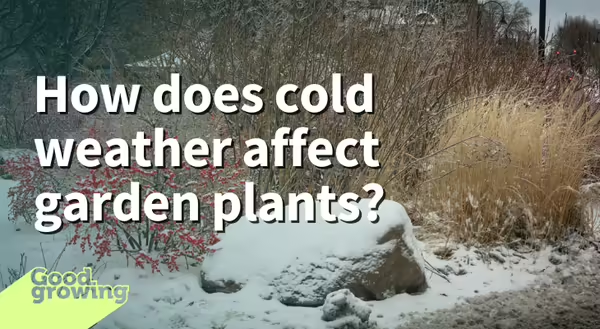
As cold weather sets in, we often find ourselves retreating indoors where it is warm. However, our landscape plants can't do this, and during times of extreme cold, like this recent cold snap, we may find ourselves wondering how our plants will fare.
How do plants prepare for cold weather?
As the days get shorter in the fall and temperatures begin to cool, plants begin to prepare themselves for winter by hardening themselves. Deciduous plants will shed their leaves and move nutrients and carbohydrates to their roots. Plants will also protect their cells by controlling how ice crystals form within their tissues. Plants will also accumulate sugars and proteins within their cells, which will lower the freezing point and prevent or slow the growth of ice crystals (think of it as "antifreeze").
Will my plants survive the cold weather?
Whether plants will survive cold temperatures or not will depend on a variety of factors. It takes time for plants to harden themselves to cold temperatures, and plants will become more cold-hardy as we transition from fall to winter. So, very cold temperatures in October or November may be more damaging than the same temperatures in January.
Cold hardiness will vary from one species to the next and even within the same species. Plants of the same species that originate from northern climates will often be more cold-hardy than those from southern climates.
This is where plant hardiness zones come into play. Plant hardiness zones show the average annual extreme minimum temperature of a location. Illinois hardiness zones range from 5a (-20 to -15°F) in the northwestern part of the state to 7a (0 to 5°F) in the southern part of the state. Here in Jacksonville, we are zone 6a (-10 to -5°F).
With recent temperatures (January 21, 2025) getting down to around -6°F in central Illinois, plants that are growing within their hardiness zone and plants that are native to this area should be fine. They have evolved and are adapted to withstand cold temperatures like the ones we have recently experienced.
The same can't be said for plants that are on the border of their hardiness zones. During mild winters, they can easily survive. However, given the recent temperatures, there is a chance they may have been damaged or killed. Plants planted in pots also have a greater risk of being injured or killed if left out and unprotected. Because they are elevated, the soil will get colder than the ground, and there is a greater chance that the plant roots will be damaged.
Microclimates can also play a role in how likely a plant is to survive cold temperatures. Landscapes can be full of microclimates; some, such as low-lying areas, can be colder, while others, like those close to a south-facing wall, can be warmer. Depending on where plants are located, they may be experiencing slightly different temperatures, which could potentially make a difference as to how much damage they receive, especially plants that are not hardy to an area.
Snow cover can also help insulate the ground and plants from cold temperatures. When there have been extreme cold temperatures, it's not uncommon to see trees and shrubs that have damage to or no flowers on their upper branches, while the lower parts are fine because they were covered in snow.
What about windchills' effect on plants?
The National Weather Service defines windchill as what the air temperature feels like to the human skin due to the combination of cold temperatures and winds blowing on exposed skin. The colder and windier the conditions, the more heat is drawn away from our bodies, making it feel colder. Since plants don't produce any heat, windchill does not affect them. However, cold, dry air can draw out moisture from plants and cause desiccation (winter burn).
Only time will tell how much of an effect the cold weather has had on plants. We'll have to wait until spring to see how things faired.
Good Growing Fact of the Week: Each plant hardiness zone represents a 10-degree F spread and is divided into two subzones that differ by 5 degrees. They are based on temperature data over 30 years, with the newest hardiness zone map (2023) being based on weather data from 1991 to 2020.
Want to get notified when new Good Growing posts are available? SIGN ME UP!
Give us feedback! How helpful was this information (click one): Very helpful | Somewhat helpful | Not very helpful
MEET THE AUTHOR
Ken Johnson is a Horticulture Educator with University of Illinois Extension, serving Calhoun, Cass, Greene, Morgan, and Scott counties since 2013. Ken provides horticulture programming with an emphasis on fruit and vegetable production, pest management, and beneficial insects. Through his programming, he aims to increase backyard food production and foster a greater appreciation of insects